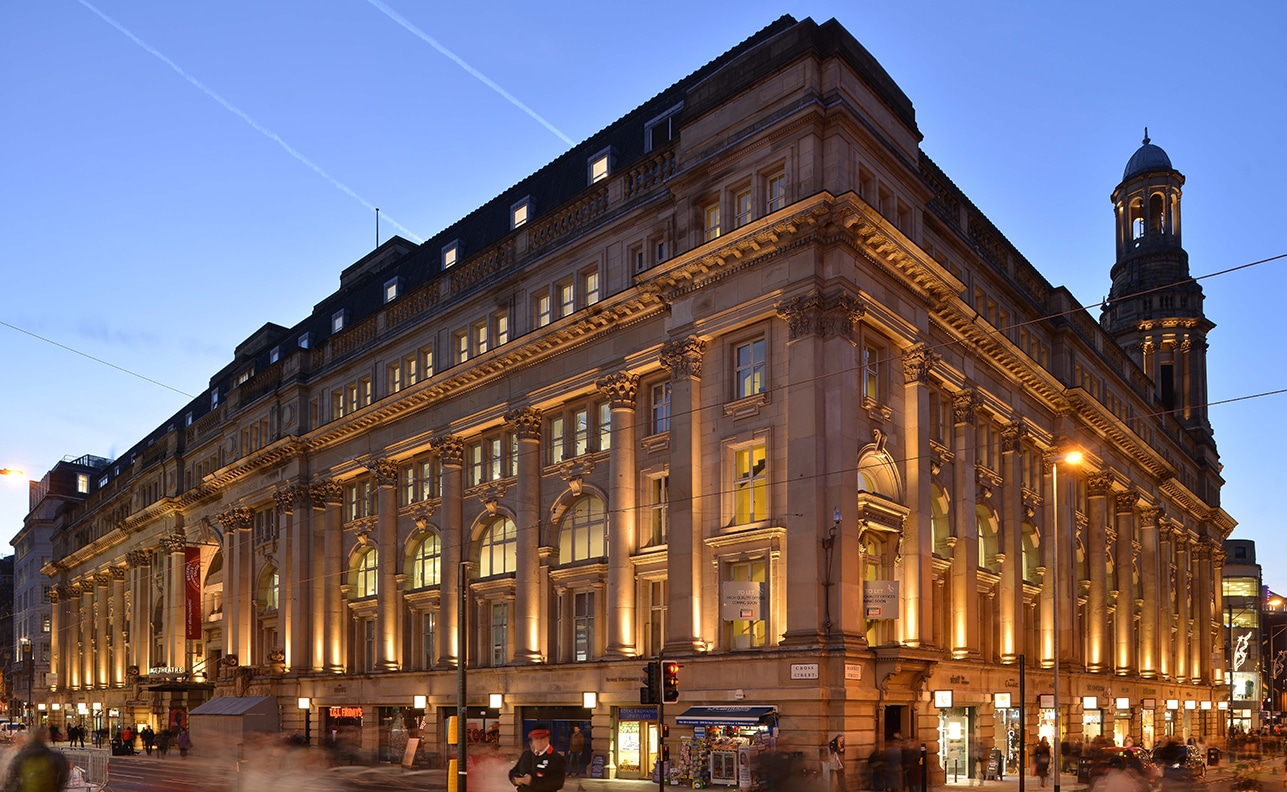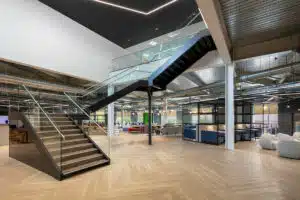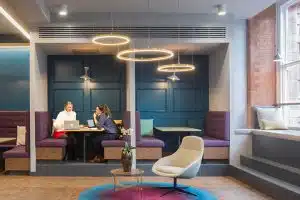Earlier this month we opened up our series on the transformation of heritage buildings with a brief look back into Manchester’s rich industrial history. It seems fitting to begin our exploration of our works with perhaps the single most important building in Manchester’s cotton industry history – the Royal Exchange.
Where Manchester got its name
Known as the ‘Parliament of the cotton lords’, the Royal Exchange in Manchester is a Grade II listed building and is truly a piece of the city’s history. Set within Manchester’s bustling retail heart just off St. Ann’s Square, it was first established in 1729.
Most of the Royal Exchange building that you see today was actually built by Mills and Murgatroyd between 1867 and 1874, after the original building was knocked down to make way for a larger premises. As the trade grew, cotton dealers and manufacturers from all over the world came to strike big business deals from the Royal Exchange, earning the city its fond nick name – Cottonopolis.
In 1914, modifications began on the building, giving it its stunning Edwardian exterior still visible today, which led to its official reopening in 1921. During the Second World War, the building was a prime target and took a damaging blow. Having been repaired, trade continued until 1968 when it finally closed its doors for business. But with a reminiscent nod to its heritage, the original trading board still remains in place, showing the day’s closing figures.
Fast forward to today – and following another repair after the shocking IRA bombing of the city in 1996 – the building is undeniably most well-known for housing its contemporary 360⁰ theatre space. But what many don’t know, is that it is also home to around 121,000 sq.ft of office space, which is found in its four storeys and two attic storeys (built by Mills and Murgatroyd).
Realising the potential
In 2015, the owners of the Royal Exchange, Trinistar, began a comprehensive refurbishment project with the aim of creating high quality, contemporary office space. In 2016, Hines and German investment company, Universal-Investment, acquired the Royal Exchange and continued with this work. The multi-million-pound transformation in the iconic grade II listed building was sympathetically designed by Corstorphine and Wright, with the fit-out carried out by ADT Workplace.
Utilising our experience of working within the constraints of a listed building, the fit-out was completed over a 42-week period and included the installation of a plant deck to the roof, followed by the fitting of a roof terrace overlooking St Ann’s Square, reception areas and workspace areas. The workspaces have been created to offer a contemporary, efficient and inspiring environment for professional businesses looking for intelligent office space with the wow factor, with exposed services giving the floor-plates height and visibility of the original structure.
Realising the potential of these Victorian properties which litter our city’s streets, and valuing how their original and historical features can be utilised as assets to create modern and intelligent workplaces, is becoming more common place by investors and ambitious businesses alike.
With its enviable location, coupled with office spaces which offer all the functionality and comfort a 21st century workplace needs, it’s no wonder that the Royal Exchange has become a hub for professional services companies looking to follow in the footsteps of the the building’s tenants of the past and make their mark on the city.




